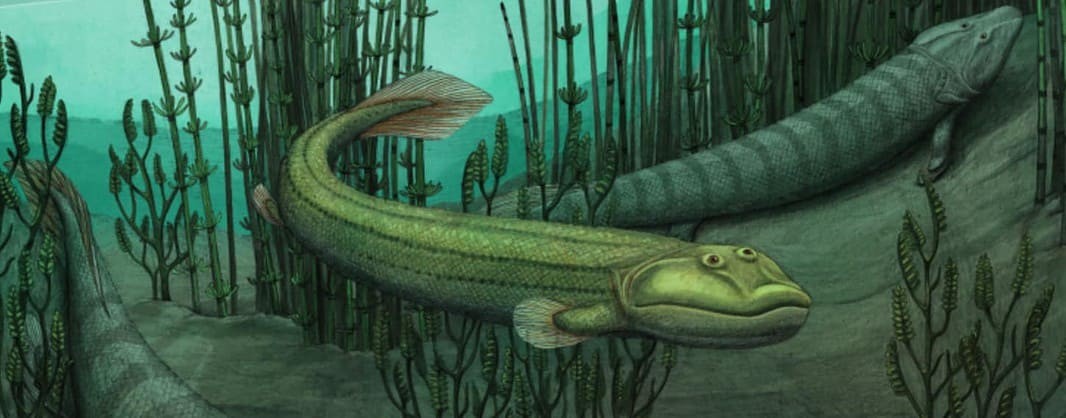A meme has been circulating online during the pandemic featuring Tiktaalik roseae, the iconic, four-legged “fishapod” that first made the transition from water to land 375 million years ago.
Most variations show Tiktaalik poking its head out of the water and ready to crawl ashore, while an out-of-frame hand threatens it with a rolled-up newspaper or a stick. The joke is that those of us exhausted by the modern world wish we could go back in time, shoo it back into the water, and stop evolution in its tracks, sparing ourselves the present day of war, pestilence and, well, internet memes.
As it turns out, one of Tiktaalik’s close relatives did just that, opting to return to living in open water instead of venturing onto land.
A new study published this week in the journal Nature from University of Chicago Professor Neil Shubin, who co-discovered Tiktaalik in 2004, describes a fossil species that closely resembles Tiktaalik but has features that made it more suited to life in the water than its adventurous cousin.
The new species, Qikiqtania wakei, was small — just 30 inches/77cm long — compared to Tiktaalik, which could grow up to 9 feet/2.74m. The new fossil includes partial upper and lower jaws, portions of the neck, and scales.
Mostly importantly, it also features a complete pectoral fin with a distinct humerus bone that lacks the ridges that would indicate where muscles and joints would be on a limb geared toward walking on land. Instead, Qikiqtania’s upper arm was smooth and curved, more suited for a life paddling underwater.
The uniqueness of the arm bones of Qikiqtania suggest that it returned to paddling the water after its ancestors began to use their appendages for walking.
According to Shubin:
“At first we thought it could be a juvenile Tiktaalik, because it was smaller and maybe some of those processes hadn’t developed yet. But the humerus is smooth and boomerang shaped, and it doesn’t have the elements that would support it pushing up on land. It’s remarkably different and suggests something new.”
Check out the study at nature.com.
(Featured credit: Alex Boersma)

